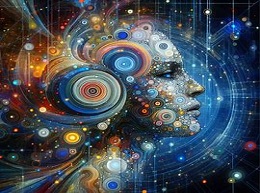AI in Visual Arts: Generative Art and Creative Collaborations

The Intersection of AI and Visual Arts
Artificial Intelligence (AI) is revolutionizing the field of visual arts, blurring the lines between technology and creativity. From generating mesmerizing artworks to enabling collaborative endeavors, AI is reshaping how artists express themselves and pushing the boundaries of artistic innovation.
Generative Art: Exploring AI Creativity
Generative art refers to artworks created with the assistance of autonomous systems, such as AI algorithms. These algorithms generate visual outputs based on predefined rules or training data, often producing unpredictable and mesmerizing results. An example is Google's "DeepDream," which uses neural networks to transform images into dream-like compositions, revealing hidden patterns and surreal landscapes.
AI-Assisted Painting and Drawing
AI tools assist artists in painting and drawing by providing suggestions, enhancing creativity, and streamlining workflows. Programs like Adobe's "Sensei" analyze user inputs and offer intelligent recommendations for color palettes, brush strokes, and composition, empowering artists to explore new techniques and styles. This collaboration between human creativity and AI capabilities results in unique and compelling artworks.
Interactive Installations and Digital Experiences
AI enables the creation of interactive installations and immersive digital experiences that engage audiences in innovative ways. Artists incorporate AI algorithms into installations that respond to viewers' movements, emotions, and gestures, creating dynamic and participatory art experiences. An example is Refik Anadol's "Machine Hallucination," where AI-generated visuals transform physical spaces into mesmerizing digital landscapes, blurring the boundaries between reality and imagination.
Data Visualization and Infographics
AI facilitates the creation of compelling data visualizations and infographics by analyzing complex datasets and transforming them into accessible and visually appealing representations. Visualization tools powered by AI algorithms help communicate information effectively, allowing audiences to grasp complex concepts and trends at a glance. The New York Times' "The Upshot" utilizes AI-driven infographics to present data-driven stories in engaging and interactive formats, enhancing understanding and engagement.
Collaborative Art Projects with AI
AI fosters collaborative endeavors between artists and machines, enabling new forms of creative expression and exploration. Artists collaborate with AI algorithms to co-create artworks, experiment with generative processes, and push the boundaries of traditional artistic practices. "AICAN," an AI artist developed by Ahmed Elgammal, collaborates with human artists to produce abstract paintings that challenge perceptions of authorship and creativity, sparking discussions about the role of AI in art-making.
Ethical and Philosophical Considerations
As AI becomes more prevalent in the visual arts, ethical and philosophical questions arise regarding authorship, creativity, and the role of technology in artistic expression. Debates about the authenticity of AI-generated artworks and the implications of automation on artistic practice highlight the need for critical reflection and ethical guidelines in AI-driven creativity.
Embracing the Future of Art with AI
AI is not replacing artists but rather augmenting their capabilities and expanding the possibilities of artistic expression. By embracing AI technologies, artists can explore new creative frontiers, collaborate with intelligent systems, and engage audiences in innovative ways. The fusion of human creativity and machine intelligence heralds a new era of artistic exploration and experimentation, where imagination knows no bounds and innovation knows no limits. As we journey into this exciting future, let us celebrate the union of art and technology and the endless possibilities it brings to the world of visual arts.